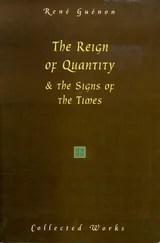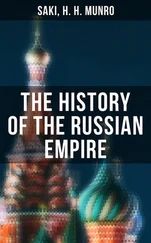As the Castilian army emerged from the defile into a wide and open plain, they found that the enemy had halted, and was already forming in order of battle. The king of Portugal led the centre, with the archbishop of Toledo on his right wing, its extremity resting on the Douro; while the left, comprehending the arquebusiers and the strength of the cavalry, was placed under the command of his son, Prince John. The numerical force of the two armies, although in favor of the Portuguese, was nearly equal, amounting probably in each to less than ten thousand men, about one-third being cavalry. Ferdinand took his station in the centre, opposite his rival, having the admiral and the duke of Alva on his left; while his right wing, distributed into six battles or divisions, under their several commanders, was supported by a detachment of men-at-arms from the provinces of Leon and Galicia.
The action commenced in this quarter. The Castilians, raising the war-cry of "St. James and St. Lazarus," advanced on the enemy's left under Prince John, but were saluted with such a brisk and well-directed fire from his arquebusiers, that their ranks were disconcerted. The Portuguese men-at- arms, charging them at the same time, augmented their confusion, and compelled them to fall back precipitately on the narrow pass in their rear, where, being supported by some fresh detachments from the reserve, they were with difficulty rallied by their officers, and again brought into the field. In the mean while, Ferdinand closed with the enemy's centre, and the action soon became general along the whole line. The battle raged with redoubled fierceness in the quarter where the presence of the two monarchs infused new ardor into their soldiers, who fought as if conscious that this struggle was to decide the fate of their masters. The lances were shivered at the first encounter, and, as the ranks of the two armies mingled with each other, the men fought hand to hand with their swords, with a fury sharpened by the ancient rivalry of the two nations, making the whole a contest of physical strength rather than skill. [23]
The royal standard of Portugal was torn to shreds in the attempt to seize it on the one side and to preserve it on the other, while its gallant bearer, Edward de Almeyda, after losing first his right arm, and then his left, in its defence, held it firmly with his teeth until he was cut down by the assailants. The armor of this knight was to be seen as late as Mariana's time, in the cathedral church of Toledo, where it was preserved as a trophy of this desperate act of heroism, which brings to mind a similar feat recorded in Grecian story.
The old archbishop of Toledo, and the cardinal Mendoza, who, like his reverend rival, had exchanged the crosier for the corslet, were to be seen on that day in the thickest of the mêlée . The holy wars with the infidel perpetuated the unbecoming spectacle of militant ecclesiastics among the Spaniards, to a still later period, and long after it had disappeared from the rest of civilized Europe.
At length, after an obstinate struggle of more than three hours, the valor of the Castilian troops prevailed, and the Portuguese were seen to give way in all directions. The duke of Alva, by succeeding in turning their flank, while they were thus vigorously pressed in front, completed their disorder, and soon converted their retreat into a rout. Some, attempting to cross the Douro, were drowned, and many, who endeavored to effect an entrance into Toro, were entangled in the narrow defile of the bridge, and fell by the sword of their pursuers, or miserably perished in the river, which, bearing along their mutilated corpses, brought tidings of the fatal victory to Zamora. Such were the heat and fury of the pursuit, that the intervening night, rendered darker than usual by a driving rain storm, alone saved the scattered remains of the army from destruction. Several Portuguese companies, under favor of this obscurity, contrived to elude their foes by shouting the Castilian battle-cry. Prince John, retiring with a fragment of his broken squadrons to a neighboring eminence, succeeded, by lighting fires and sounding his trumpets, in rallying round him a number of fugitives; and, as the position he occupied was too strong to be readily forced, and the Castilian troops were too weary, and well satisfied with their victory, to attempt it, he retained possession of it till morning, when he made good his retreat into Toro. The king of Portugal, who was missing, was supposed to have perished in the battle, until, by advices received from him late on the following day, it was ascertained that he had escaped without personal injury, and with three or four attendants only, to the fortified castle of Castro Nuño, some leagues distant from the field of action. Numbers of his troops, attempting to escape across the neighboring frontiers into their own country, were maimed or massacred by the Spanish peasants, in retaliation of the excesses wantonly committed by them in their invasion of Castile. Ferdinand, shocked at this barbarity, issued orders for the protection of their persons, and freely gave safe-conducts to such as desired to return into Portugal. He even, with a degree of humanity more honorable, as well as more rare, than military success, distributed clothes and money to several prisoners brought into Zamora in a state of utter destitution, and enabled them to return in safety to their own country. [24]
The Castilian monarch remained on the field of battle till after midnight, when he returned to Zamora, being followed in the morning by the cardinal of Spain and the admiral Henriquez, at the head of the victorious legions. Eight standards with the greater part of the baggage were taken in the engagement, and more than two thousand of the enemy slain or made prisoners. Queen Isabella, on receiving tidings of the event at Tordesillas, where she then was, ordered a procession to the church of St. Paul in the suburbs, in which she herself joined, walking barefoot with all humility, and offered up a devout thanksgiving to the God of battles for the victory with which he had crowned her arms. [25]
It was indeed a most auspicious victory, not so much from the immediate loss inflicted on the enemy, as from its moral influence on the Castilian nation. Such as had before vacillated in their faith—who, in the expressive language of Bernaldez, "estaban aviva quien vence,"—who were prepared to take sides with the strongest, now openly proclaimed their allegiance to Ferdinand and Isabella; while most of those, who had been arrayed in arms or had manifested by any other overt act their hostility to the government, vied with each other in demonstrations of the most loyal submission, and sought to make the best terms for themselves which they could. Among these latter, the duke of Arevalo, who indeed had made overtures to this effect some time previous through the agency of his son, together with the grand master of Calatrava, and the count of Urueña, his brother, experienced the lenity of government, and were confirmed in the entire possession of their estates. The two principal delinquents, the marquis of Villena and the archbishop of Toledo, made a show of resistance for some time longer; but, after witnessing the demolition of their castles, the capture of their towns, the desertion of their vassals, and the sequestration of their revenues, were fain to purchase a pardon at the price of the most humble concessions, and the forfeiture of an ample portion of domain.
The castle of Zamora, expecting no further succors from Portugal, speedily surrendered, and this event was soon followed by the reduction of Madrid, Baeza, Toro, and other principal cities; so that, in little more than six months from the date of the battle, the whole kingdom, with the exception of a few insignificant posts still garrisoned by the enemy, had acknowledged the supremacy of Ferdinand and Isabella. [26]
Читать дальше












